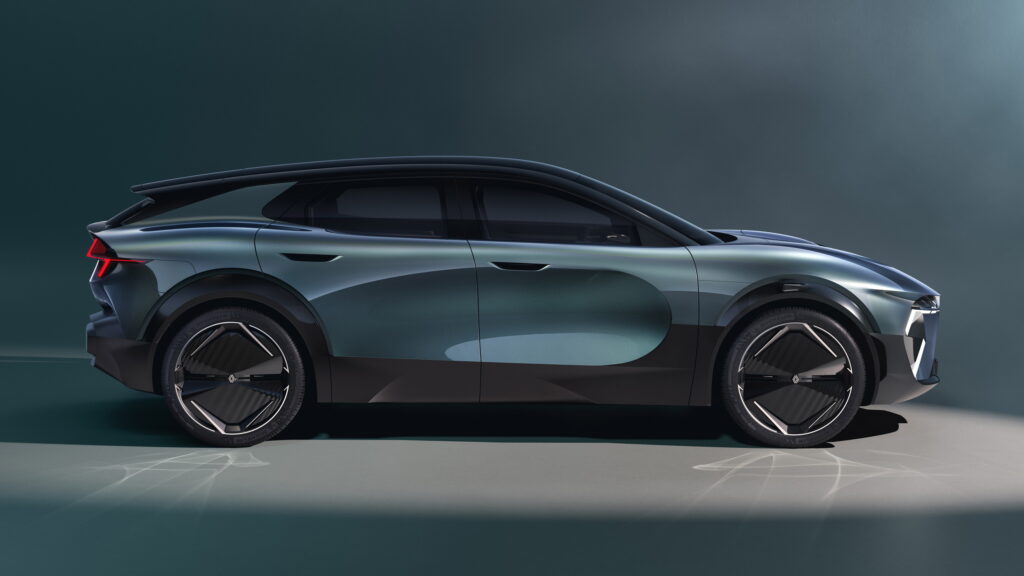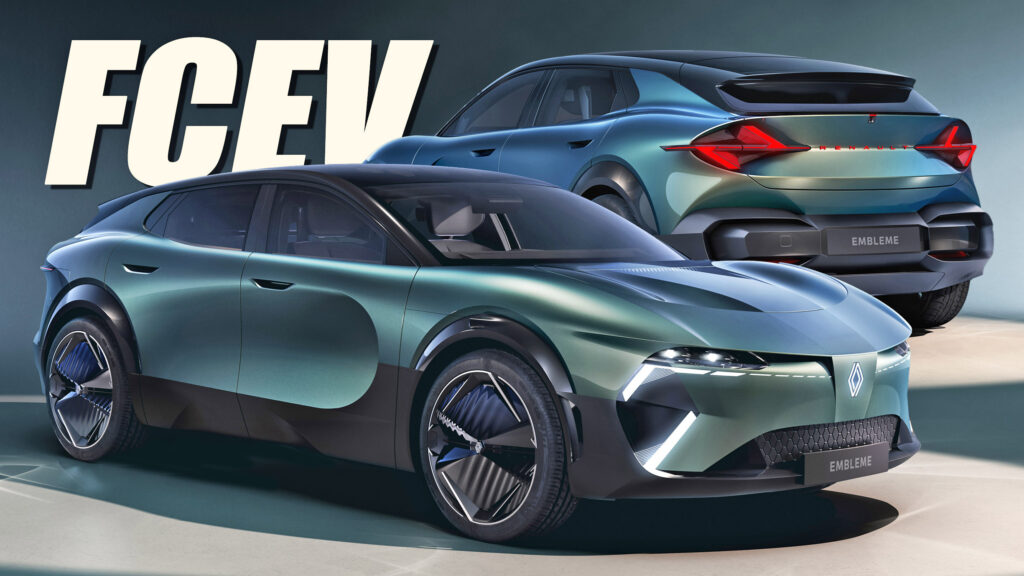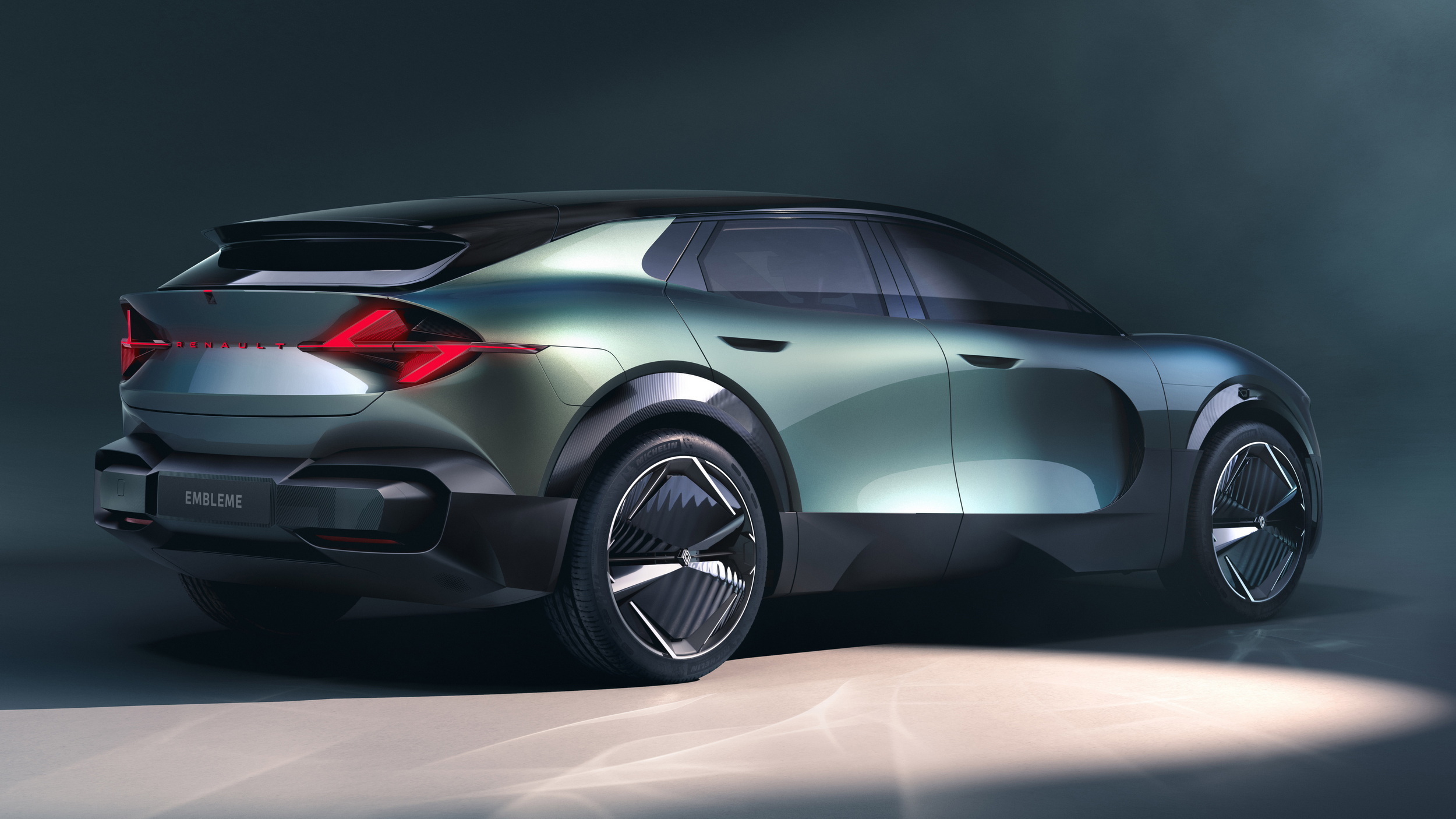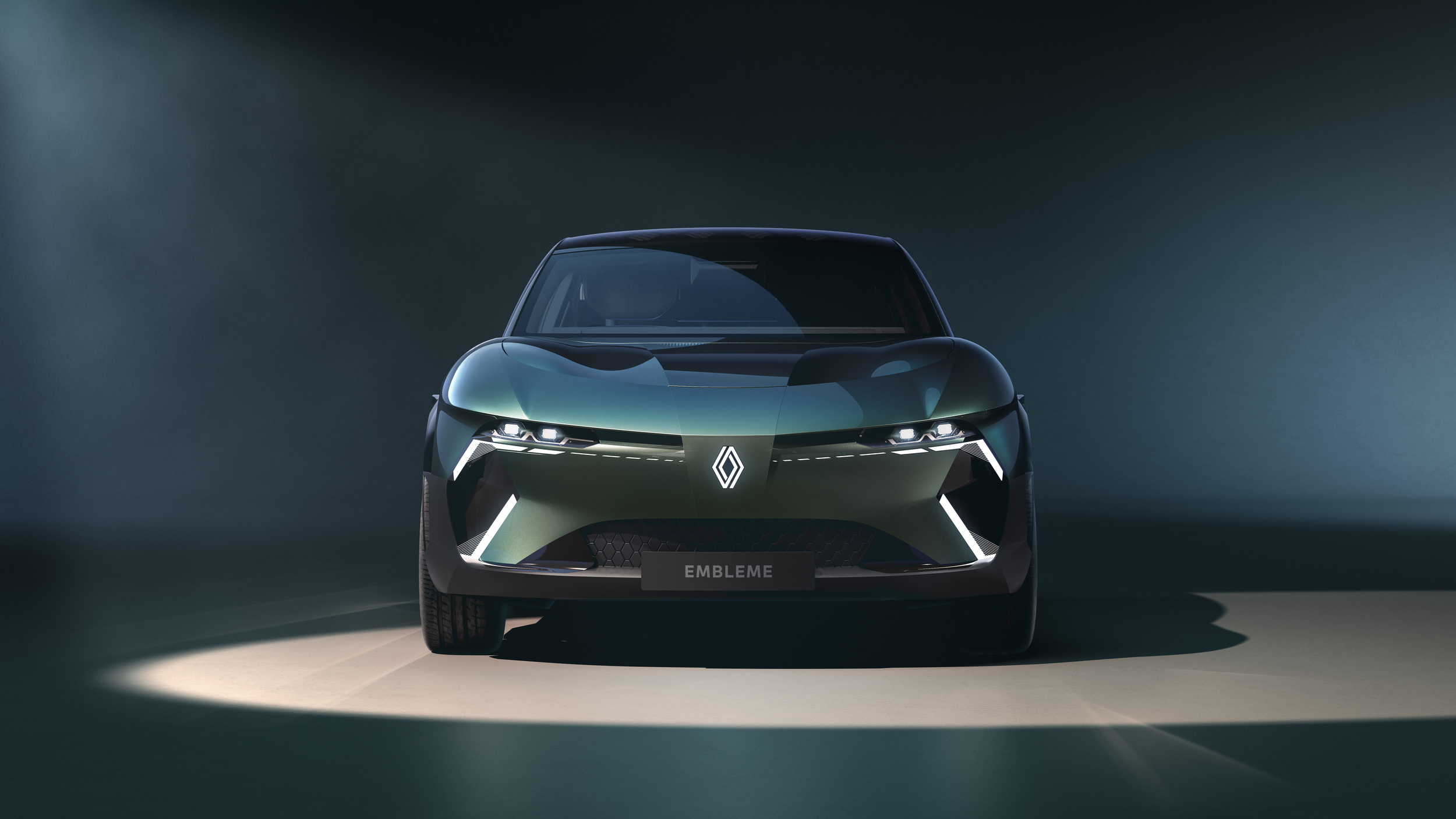- The Embleme is Renault’s vision for a family vehicle with 90% fewer lifetime emissions.
- The concept combines a battery pack with a hydrogen fuel cell for extended range.
- The sleek crossover makes use of recycled materials for a lower CO2 footprint.
Renault made a surprise unveiling before the 2024 Paris Auto Show with the Embleme concept. The futuristic crossover features an FCEV powertrain using hydrogen as a range-extender. More importantly, it is said to reduce lifetime CO2 emissions by 90 percent compared to a modern production vehicle.
The 4.8-meter (189 inches) long concept has an aerodynamic shape and aggressive styling cues, harking back to Renaults’ design language from the late ’90s. The sharp nose somehow brings to mind the Safrane and Laguna sedans, albeit with futuristic LEDs and sexy curves.
More: 2025 Renault Austral’s Rafale-Inspired Facelift Accidentally Revealed
The tail is equally impressive with a heavily sculpted tailgate and a deconstructed version of the Renault rhombus logo on the high-tech taillights. The bodystyle is a blend of crossover, hatchback, and shooting brake, with the footprint being closer to Europe’s midsize segment.
The company didn’t publish photos of the interior, but the said it is spacious enough for families, thanks to the 2.9 m (114.2 inches) long wheelbase. At the same time, clever solutions like the flat underbody, the mirror-replacing cameras, the aero-optimized wheels, and the fins on the hood, result in an aerodynamic coefficient of 0.25 cd, contributing to greater efficiency.

The concept rides on the AmpR Medium architecture, which is an evolution of the CMF-EV platform underpinning the Megane E-Tech and Scenic E-Tech. The “dual power energy electric powertrain” combines a 40 kWh Nickel Manganese Cobalt battery pack for daily driving with a hydrogen fuel cell for longer journeys. Both power a single electric motor that produces 215 hp (160 kW / 218 PS).
Renault claims that the battery alone offers “several hundred kilometers” of range, with the 2.8 kg hydrogen tank extending it by an extra 350 km (218 miles). Overall, the Embleme can travel 1,000 km (621 miles) with two 5-minute refueling stops, matching the time of an ICE-powered vehicle – as long as you can find two hydrogen refueling stations along your route. Another factor that contributes to efficiency is the comparably low weight of 1,750 kg (3,858 lbs) including the fuel cell and the battery.
Renault’s main goal with the concept was to explore solutions for maximum decarbonization across the lifecycle of a vehicle. The advertised 90 percent reduction in CO2 emissions was achieved with the help of 20 partners that worked on the project with Renault and Ampere. Innovations include natural and recycled materials with a low carbon footprint, re-used parts, and the use of renewable energy in production. As a result, the Embleme can produce just 5 tonnes of CO2 from “cradle to grave”.
The Renault Embleme will be showcased at the Paris Auto Show, starting October 14. Following the public premiere, Renault’s Ampere unit will offer a detailed presentation of the concept towards the end of the month. The company describes the Embleme as their “vision of a family vehicle” and a tech laboratory, meaning that some of its features might find their way to future production models.





















